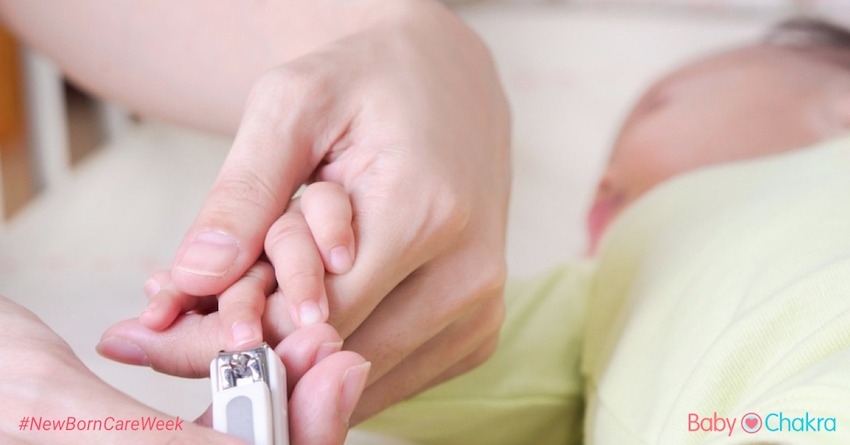
The beginner’s Care Guide for your baby’s eyes, ears, nose, nails and teeth
23 May 2016 | 4 min Read
Baby Chakra
Author | 501 Articles
Your little bundle of joy is beautiful, isn’t it? And this tiny wonder has those teeny-weeny baby eyes, ears, nose, nails and teeth, which look aww-dorable but to take care of them is easier said than done! Cleaning your little one’s eyes, ears and nose, and caring for his nails, can have other benefits though. These smaller rituals with these tiny parts have the power to help you build your bond with your baby. Routine touch helps him/her develop self-confidence and the ability to relate to others, while also nurturing his happy, healthy development.
Here are a few tips which may help you keep up the pretty picture and your baby safe too!
Before You Get Started, Safety First!
Never put anything directly in your baby’s ears, eyes or nose. Wipe any material from his eyes, mouth, nose or outer ear with a soft, moistened cotton round.
Baby Ears
When cleaning the baby’s ears, focus on getting the outside clean. Even though the drugstore holds lots of ear cleaning tools andformulae for the inside, only your doctor can tell you if they’re necessary.
A moistened soft cotton bud, designed for babies, could be a good choice but always check with your pediatrician if you must use it. Be very careful when cleaning your baby’s ears — clean what you can see — never put anything deep into your baby’s ear canal or nose.
Baby Eyes
Protecting your child’seyes
No toddler likes to get anything in their eyes, so consider putting a visor on her forehead or rinsing her hair while she’s leaning back towards you so that you can avoid getting water in her face.
And a newborn’s eyes are still developing. Compared to adults, they blink less often, tear less and it takes time for the blink reflex to develop, making it easier for an unwanted substance to get into the eyes and cause irritation.
Cleaning your baby’s eyes
Holding your baby’s head, gently cleanse around each eye with a cotton round dampened with clean warm water. Use a new cotton round for each eye and always wipe from the inside corner of the eye outward.
Baby Nose
If your baby is congested, there are a few things you can do to provide gentle relief. Talk to your baby’s doctor about using saline nasal drops to ease congestion.
You can use a moistened cotton round to gently clean any debris from around baby’s nose, being sure to wipe away from the nose. For irritation under or around the nose, you can use a lotion specially formulated for babies.
Baby Nails
Cut your baby’s nails regularly to prevent him from scratching himself and the spread of infection, as nails can harbor dirt and germs. Cut them right after a bath when they are softer. Use blunt scissors or baby nail clippers with a magnifying glass attached so small nails are easier to see. Follow the natural line of the finger, depressing the finger pad away from the nail so you can avoid cutting the skin of the finger.
If your baby is uncomfortable and refusing to co-operate while cutting nails, you could try either of the following –
- Do your own nails first and show him/her what fun it is to do so!
- Distract your baby with a fun song or some funny expressions or play of finger puppets
Over time, it will all become easy for you as no one loves the baby more than you do:-)
Also read: Quick Guide on baby massage techniques for 6 months+
Explore the entire collection of articles: Baby’s Health
If you are reading this article on our website and have an Android phone, please download our APP here for a more personalised experience based on your lifestage.
A


Suggestions offered by doctors on BabyChakra are of advisory nature i.e., for educational and informational purposes only. Content posted on, created for, or compiled by BabyChakra is not intended or designed to replace your doctor's independent judgment about any symptom, condition, or the appropriateness or risks of a procedure or treatment for a given person.
